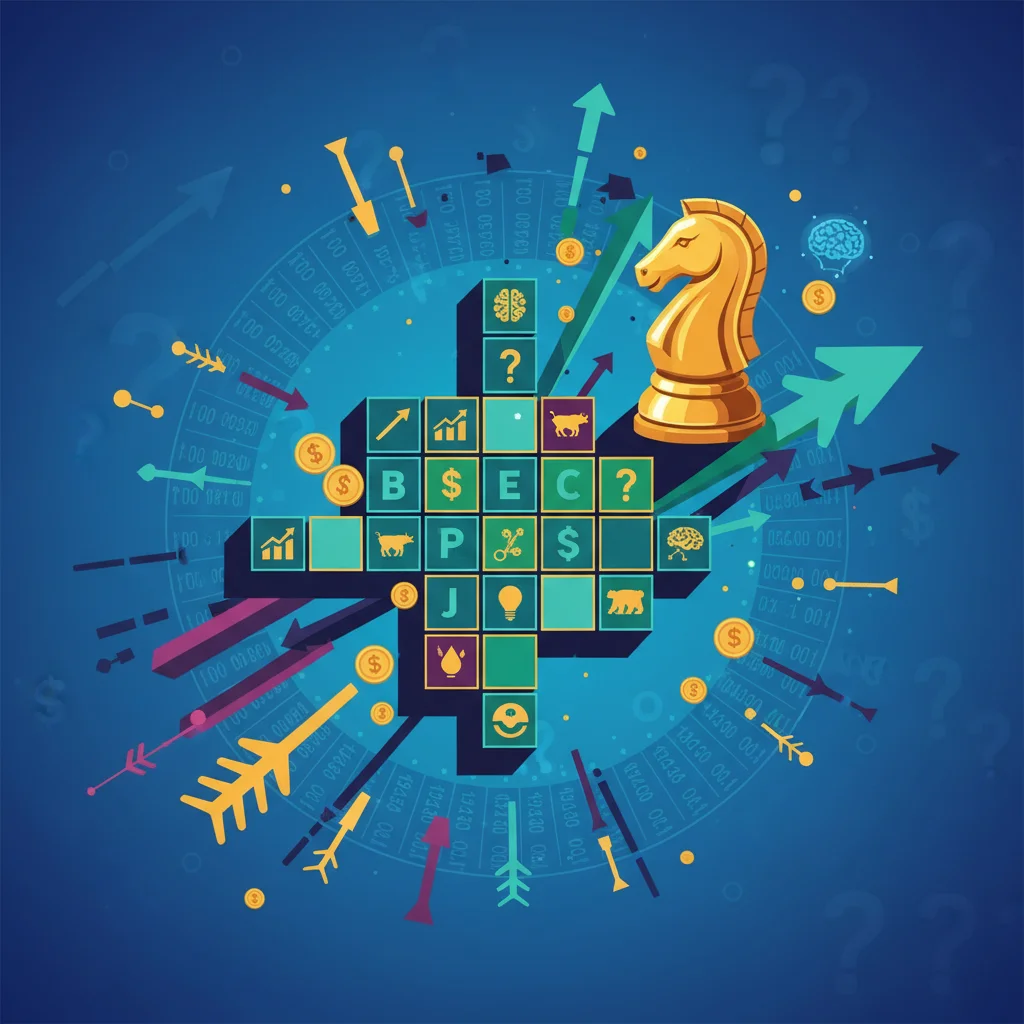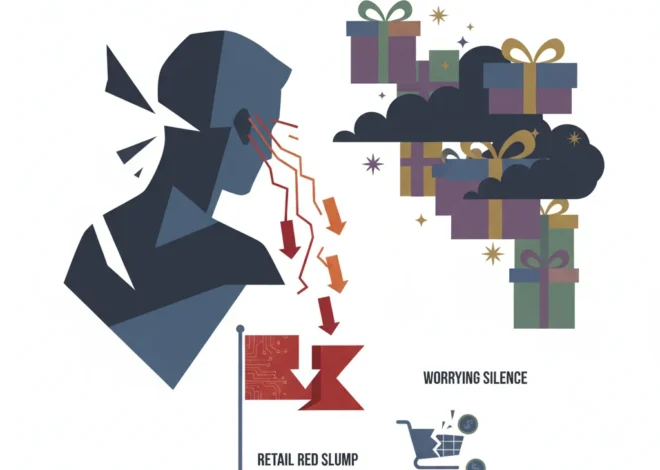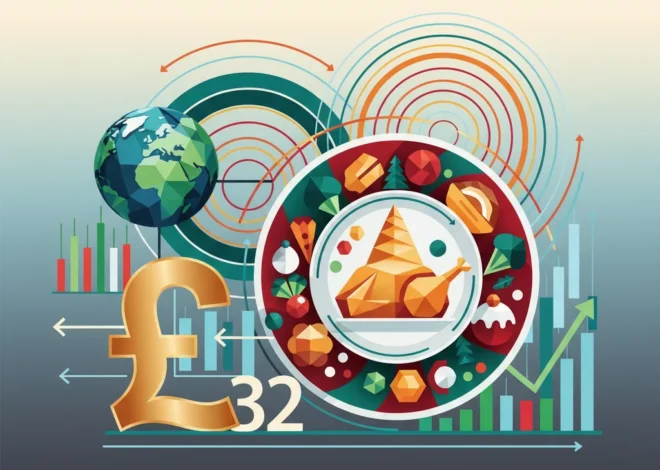
The Investor’s Gambit: Why Solving a Crossword is Like Mastering the Stock Market
What do a cryptic crossword master and a seasoned Wall Street investor have in common? At first glance, the two pursuits seem worlds apart. One is a quiet, cerebral pastime involving clever wordplay; the other is a high-stakes, fast-paced world of numbers, charts, and capital. Yet, peel back the layers, and you’ll find that the cognitive architecture required to excel at both is remarkably similar. The mental discipline, pattern recognition, and strategic thinking needed to solve the Financial Times Crossword Number 18,203 are the very same skills that separate successful investors from the rest of the pack in today’s complex global economy.
Navigating the intricate web of modern finance is no longer just about reading a balance sheet. It’s about deciphering narratives, connecting disparate pieces of information, and making calculated decisions under uncertainty. It is, in essence, the ultimate puzzle. This article explores the powerful parallels between these two disciplines, revealing how honing your analytical mind through challenges like crosswords can directly translate into a more sophisticated and successful approach to investing and understanding the market.
Decoding the Clues: The Hidden Language of the Financial Markets
A cryptic crossword is a masterclass in looking beyond the surface. A clue like “Sounds like a charge for a small room” (CELLAR) isn’t literal; it’s a puzzle wrapped in an enigma. To solve it, you must understand the “language” of the puzzle—the conventions, the abbreviations, the hidden indicators. Similarly, the stock market communicates in its own cryptic language. A press release, an earnings report, or a central bank statement is rarely straightforward. They are packed with nuance, jargon, and subtext that must be carefully decoded.
Consider the language of a Federal Reserve announcement. A subtle shift from “transitory inflation” to “persistent price pressures” can send shockwaves through global markets. The successful analyst, like the crossword solver, learns to read between the lines. They understand that a company’s boast of “record revenue” might mask shrinking profit margins, a critical detail that could signal future trouble. This ability to parse complex information is paramount, especially as markets react in nanoseconds to new data. For instance, initial jobless claims falling below expectations might seem like unequivocally good news, but a seasoned investor might see it as a signal that the Fed will maintain higher interest rates for longer, impacting growth stocks. According to some analyses, market sentiment can shift dramatically based on single keywords in economic reports (source).
This deep reading extends to the world of financial technology. The whitepaper for a new blockchain project is today’s version of a cryptic clue. It’s filled with technical specifications and promises of disruption. The skilled investor must cut through the hype to assess the core value proposition, the tokenomics, and the viability of the underlying technology—a task requiring immense analytical rigor.
Across & Down: The Interconnected Grid of the Global Economy
The magic of a crossword puzzle lies in its interconnectedness. The answer to 1-Across directly impacts the possibilities for 2-Down, 3-Down, and so on. A single correct entry can unlock an entire section of the grid, while a mistake can lead you down a frustrating rabbit hole. This intricate grid is a perfect metaphor for the modern global economy.
No market, sector, or asset class exists in a vacuum. A drought in Brazil can affect coffee futures in New York, which in turn impacts the stock price of a major café chain in Seattle. The rise of a new fintech payment platform in Asia can challenge the dominance of traditional banking institutions in Europe. This interconnectedness, often referred to as systemic risk, is one of the most challenging aspects of modern investing. The 2008 financial crisis was a brutal lesson in this, where the collapse of the U.S. housing market triggered a domino effect across the entire global financial system. According to the Financial Stability Board, monitoring these cross-border interconnections is a top priority for regulators to prevent future crises.
The table below illustrates how a single economic event can ripple across different sectors, much like a single word in a crossword puzzle affects intersecting clues.
| Economic Event | Direct Impact (1-Across) | Indirect Impact (2-Down) | Tertiary Impact (3-Down) |
|---|---|---|---|
| Central Bank Raises Interest Rates | Cost of borrowing for banks increases, impacting lending and the banking sector. | Growth-oriented tech stocks (fintech) become less attractive as future earnings are discounted more heavily. | Consumer spending on big-ticket items like cars and houses slows, affecting the retail and real estate markets. |
| Breakthrough in AI Chip Technology | Semiconductor stocks surge, leading the tech sector. | Companies across all sectors (from healthcare to logistics) invest in AI, boosting productivity and B2B software sales. | Increased energy demand from data centers impacts utility and energy stocks. |
| Geopolitical Tension in a Major Oil-Producing Region | Oil prices spike, benefiting energy company stocks. | Transportation and airline stocks suffer due to higher fuel costs. | Inflationary pressure builds across the economy, potentially prompting a central bank response. |
A successful investor, therefore, must think like a crossword solver, constantly considering how one piece of the puzzle fits with another. They cannot simply focus on a single stock (one clue) but must understand the entire grid (the macroeconomic environment).
Filling the Blanks: Navigating Uncertainty and Risk
Staring at a blank crossword grid can be intimidating. It represents a sea of unknowns. Your first few entries are hypotheses—educated guesses based on the clues you feel most confident about. Each correct word you fill in reduces uncertainty and provides new letters, new information, to help solve the intersecting clues.
This process is identical to building an investment portfolio. You start with a blank slate and must make decisions based on incomplete information about the future. Each investment is a calculated risk. Your initial “anchor” investments might be in blue-chip stocks or index funds—the equivalent of a straightforward anagram clue you can solve immediately. These provide a stable base. From there, you might venture into more speculative areas, like emerging markets or a promising but unproven tech startup. These are your 15-letter cryptic clues that require more work and carry more risk, but also offer a greater reward.
Effective risk management in investing, like in puzzle-solving, is about not getting stuck. If a clue is too difficult, you move on and come back to it later when you have more intersecting letters. Similarly, if an investment thesis isn’t playing out, a disciplined investor knows when to cut their losses and reallocate capital. They don’t become emotionally attached to a single “clue.” Studies on behavioral economics have shown that investors’ emotional biases are a leading cause of poor returns (source). A puzzle solver feels no shame in erasing a wrong answer; an investor should feel no shame in admitting a mistake and moving on.
A New Economic Dawn? Unpacking the US-China Trade Deal and Its Impact on Global Markets
The ‘PENCIL-DROP’ Moment: Pattern Recognition and Alpha
Every cryptic crossword enthusiast lives for the “pencil-drop” moment—the sudden flash of insight when a convoluted clue unravels and the perfect answer appears in your mind. It’s a feeling of deep satisfaction that comes from recognizing a hidden pattern that was there all along.
In finance, this is the discovery of alpha—the excess return on an investment above the benchmark rate. It’s finding the undervalued company the rest of the market has overlooked, identifying a demographic shift before it becomes a mainstream trend, or understanding the disruptive potential of a new financial technology before it hits the headlines. These insights are born from the same cognitive process: the relentless sifting of information to find a meaningful pattern.
Today, this pattern recognition is being supercharged by fintech and AI. Algorithmic trading systems analyze petabytes of data, from satellite imagery of parking lots to the sentiment of social media posts, searching for predictive patterns. The table below highlights some of the key fintech innovations that are changing the game of financial pattern recognition.
| Fintech Innovation | How It Enhances Pattern Recognition | Example Application |
|---|---|---|
| Machine Learning (ML) Algorithms | Analyzes vast historical datasets to identify complex, non-obvious correlations that predict market movements. | Hedge funds using ML for high-frequency trading strategies. |
| Natural Language Processing (NLP) | Scans and interprets news articles, earnings call transcripts, and social media to gauge market sentiment in real-time. | Automated systems that trade based on the tone of a central bank governor’s speech. |
| Blockchain Analytics | Provides transparent, on-chain data to track capital flows, identify whale activity, and assess the health of decentralized finance (DeFi) protocols. | Crypto investment firms analyzing wallet movements to anticipate large trades. |
| Alternative Data Platforms | Uses non-traditional data sources (e.g., geolocation, web traffic, credit card transactions) to generate insights into company performance. | An investor using satellite data to count cars in a retailer’s parking lots to predict quarterly sales. |
Even in this high-tech world, the fundamental skill remains the same. The human analyst who directs these tools, who formulates the hypotheses, and who interprets the output, is still the master puzzle-solver.
Checkout Shock: Why a Supermarket Tax Showdown Could Redefine the UK Economy
Conclusion: Sharpen Your Mind, Sharpen Your Portfolio
The financial markets can seem like an impossibly complex puzzle, reserved only for an elite few. But as the humble crossword shows us, the tools needed to solve it are within anyone’s reach. The patience to study a problem, the flexibility to see it from multiple angles, the discipline to manage uncertainty, and the joy of finding a hidden pattern are universal cognitive skills.
By engaging in intellectually demanding activities—whether it’s a cryptic crossword, a game of chess, or learning a new language—we are forging the very mental pathways that lead to better financial decision-making. So the next time you pick up the FT crossword, don’t see it as a mere distraction. See it as a workout for your most valuable investment asset: your mind. By learning to master the small, intricate world of the puzzle grid, you are simultaneously preparing yourself to navigate the much larger, more consequential puzzle of the global economy.


